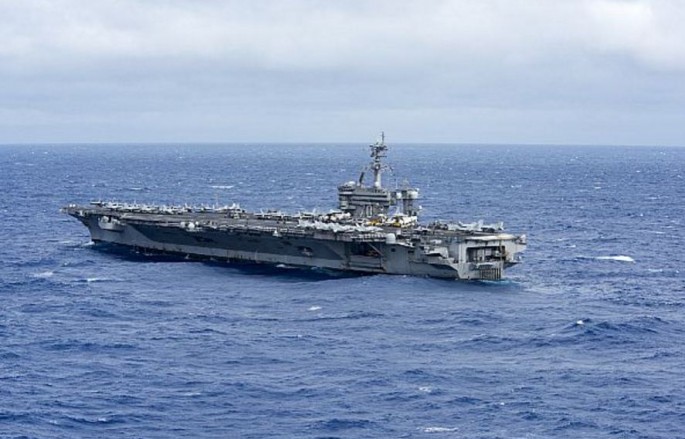The U.S. Navy resumed round the clock patrols of the disputed South China Sea on Feb. 18 with the arrival of its Carrier Strike Group 1 (CSG-1) built around the Nimitz-class aircraft carrier USS Carl Vinson (CVN 70).
Escorting the carrier is Destroyer Squadron 1 (DESRON-1) and its Arleigh Burke-class, Aegis equipped guided-missile destroyers, and aircraft from Carrier Air Wing 2 (CVW-2) whose "teeth" consist of four strike fighter squadrons of McDonnell Douglas F/A-18C/E/F Super Hornets with almost 50 jets among them.
The Vinson replaced Carrier Strike Group 5 led by the USS Ronald Reagan (CVN-76), which returned to its homeport of Yokosuka, Japan in November 2016 after a three-month patrol of Asia along with the USS John C. Stennis (CVN-74).
Prior to deploying to the South China Sea, warships and aircraft from CSG 1 conducted training off the islands of Hawaii and Guam to maintain and improve their readiness and develop cohesion as a strike group. The strike group also conducted operations in the Philippine Sea.
"The training completed over the past few weeks has really brought the team together and improved our effectiveness and readiness as a strike group," said Rear Adm. James Kilby, Commander, CSG 1. "We are looking forward to demonstrating those capabilities while building upon existing strong relationships with our allies, partners and friends in the Indo-Asia-Pacific region."
Vinson last deployed to the Western-Pacific in 2015 when she conducted a bilateral exercise with the Royal Malaysian Navy and Royal Malaysian Air Force in the South China Sea. Vinson first operated in the South China Sea in 1983 and in total, has operated there during 16 previous deployments over its 35 year history.
While deployed, the CSG 1 will remain under the command and control of the United States Third Fleet, including beyond the international dateline, which previously divided operational areas of responsibility for Third and United States Seventh Fleet.
By operating forwards in Asia, the Third Fleet offers additional options to the United States Pacific Fleet commander by leveraging the capabilities of the Third and Seven Fleets. This operational concept allows both numbered fleets to complement one another and provide the foundation of stability in the Indo-Asia-Pacific region.
CVW-2 includes the "Bounty Hunters" of Strike Fighter Squadron (VFA) 2; the "Blue Blasters" of VFA-34; the "Kestrels" of VFA-137 and the "Golden Dragons" of VFA-192.
It also includes the "Black Eagles" of Carrier Airborne Early Warning Squadron (VAW) 113; the "Gauntlets" of Electronic Attack Squadron (VAQ) 136; the "Providers" of Fleet Logistic Support Squadron (VRC) 30; the "Black Knights" of Helicopter Sea Combat Squadron (HSC) 4 and the "Blue Hawks" of Helicopter Maritime Strike Squadron (HSM) 78.



























